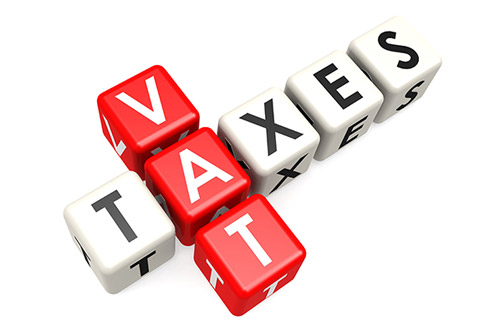Sugam 2 to simplify VAT filing in Delhi
Dated 6th November, 2015
 While India Inc's country-wide ambitious indirect tax reform replacing the existing all consumption taxes by one single consolidated system known as Goods and Services Tax (GST) based on the benchmarked best practices followed in OECD countries is expected to roll out in April 2016, the Delhi Government has introduced an easy online Value Added Tax (VAT) filing system.
While India Inc's country-wide ambitious indirect tax reform replacing the existing all consumption taxes by one single consolidated system known as Goods and Services Tax (GST) based on the benchmarked best practices followed in OECD countries is expected to roll out in April 2016, the Delhi Government has introduced an easy online Value Added Tax (VAT) filing system.
The new Sugam 2 or DS 2 taxation format is expected to simplify the VAT filing method in Delhi. According to the new system, the trader can log into the website of the department through a registered mobile number in a summary manner via SMS before the entry of goods into Delhi. All the remaining details can be filed later after the goods are brought into the National Capital by online within 48 hours of their entry effective from September 15, 2015. According to the Delhi Government, this abolishes the earlier cumbersome T2 system which demanded 42 different details with only 13 data points.
India Inc has been facing one of the most cumbersome consumption tax regimes in the world, including Value Added Tax(VAT) levied on goods separately by the governments of most of the Indian States and Union Territories, Service Tax charged on services and CENVAT, a VAT on the supply of goods charged by the Central Government, and Professional Tax. The taxes often overlap. In certain cases they result in double taxation putting heavy stress on administrative machinery and causing unwarranted harassment to taxpayers. VAT was introduced in India as an indirect taxation system from April 1, 2005 replacing the existing General Sales Tax Laws and associated VAT Rules. Haryana first adopted this taxation system to be followed by all other States and most of the UTs of India.
Unpredictable variations in tax rates are there in India because each Government is constitutionally sovereign in levying and collecting State taxes bringing the cascading effect of taxes and price variations. The Goods and Services Tax reform seeks to create a common national market by bringing down fiscal barriers between the States and reducing complexities in the current tax structure.
Though the broad design of the State-level VAT is uniform across the country, every State has its own VAT legislation and procedures. VAT was introduced with the objective of making accounting more transparent, cutting trade barriers, boosting tax revenue and most importantly doing away with the cascading effect of taxes. The Delhi Government has already got passed a VAT Amendment Bill enabling it to enhance VAT on 11 kinds of goods enlisted in the Fourth Schedule by up to 30 per cent in future from the existing 12.5 to 20 percent. The items include petroleum products, liquor and aerated drinks and tobacco.
If the substantial tax differential existing currently among the neighbouring States of Delhi is reduced by the Delhi Government in future by hiking VAT, such measure will enable it to enhance its much-required revenue for significant reforms in the housing, poverty amelioration, health, nutrition, fighting against dengue and other diseases, malnutrition, employment generation, education and skill development sectors. Besides, this reform will help the Delhi Government to prevent bootlegging and blackmarketing from the neighbouring States in those 11 items included in the Schedule which are not generally looked upon kindly by the tax authorities, community leaders. civic reformers, feminine groups and social activists.





